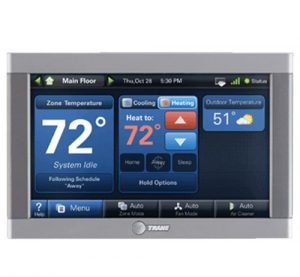We’ve all likely been at the point of frustration when the power goes out due to a storm or mishap. When we’re used to always having power, it can be an annoying occurrence. Many turn to the convenience of a gas generator to keep necessary power going during these down times. While they have become an extremely popular resource and appliance in this country, there are many fears that a large number of people who use them don’t use them properly or take important safety precautions. This can be a very dangerous mistake.
According to the US Consumer Product Safety commission, gas generators are one of the biggest culprits when it comes to non-fire related CO (carbon monoxide) deaths and injuries in homes and apartments. Some studies even suggest that these units cause more CO related harm than furnaces, water heaters and ovens combined.
This seems to be a growing trend in the past decade, especially with the increased number of natural disasters and inclement weather that has hit the nation. As a result of these tragedies, there have been more widespread power outages, which has caused a greater demand for home generators. With more sales and usage, the number of carbon monoxide related deaths and injuries has also trended up in the last decade (with heavy spikes in years with major disasters such as Hurricanes Katrina and Sandy.)
There’s a long list of items that owners of generators should keep in mind before, during and after using this equipment—all of which should be carefully read and understood from the generator’s owner’s manual. But, we thought we’d share a few tips on the blog to keep in mind on this topic.
1. Keep generators a safe distance away from your house. Generators should always be kept outside at least 20 feet from any space in deadly CO gas and can prevent other accidents associated with generators.
2. Never place a running generator inside an enclosed space. While it may seem like common sense to avoid, many generator owners leave this equipment in enclosed areas such as garages and sheds while running. Even if doors are open in these enclosures, CO from the generators can build up quickly air and cause a great deal of harm, or worse.
3. Make sure your CO detector is on and working. Whenever you find yourself in need of a generator, it’s a good idea to make sure you have CO detectors outside all sleeping areas, and that they work. CO detectors generally last 3-5 years. Even if the test mode works, it only checks the horn, not the sensor.
4. Hire a professional electrician or contractor to install it correctly. Professionals, such as our team at BelRed, have a high level of training when it comes to these types of home safety issues. Aside from risks of carbon monoxide poisoning, generator installation comes with risks of electrocution. Make sure your generator is properly installed if it’s hooked up to a permanent power source for your home.
We hope you’re able to avoid major power outages, but unfortunately that’s next to impossible over a long period of time. It’s always good to be prepared with equipment like a stand-by generator. It’s even better to make sure you’re properly prepared to use them.







